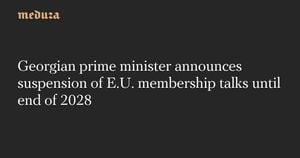This season marks another milestone as holiday spending is projected to reach staggering new heights, igniting both excitement and concern among retailers and consumers alike. With Americans expected to spend nearly $1,000 per person during the final two months of the year, the potential for record-breaking sales is at the forefront of conversations around Black Friday and the holiday shopping period.
Jason Daniel, the founder and CEO of Brisbane-based activewear brand LSKD, is already witnessing the rush first-hand. Instead of adhering to the traditional Black Friday-Cyber Monday weekend, he launched his sales venture early, drawing the attention of consumers eager to snag discounts. "Night one in the first hour is always crazy," he noted, recounting the overwhelmed systems and packed orders just five days post-launch. With more than 127,000 orders already placed, the pressure is on to meet shipping goals well before Black Friday officially begins.
At the same time, projections from Roy Morgan suggest Australian shoppers alone will contribute around $6.7 billion during the Black Friday sales weekend, representing the largest total on record. This is corroborated by the National Retail Federation, which forecasts $902 per person will be spent across the U.S. over the holiday season, translating to approximately $964.4 billion overall—an uptick of 3.8% from previous years. The holiday shopping period, typically commencing November 1 and concluding around New Year's Eve, focuses heavily on securing family time and cherished gifts.
Yet amid this optimistic spending forecast lies significant caution. Consumer sentiment, particularly concerning economic conditions, remains rife with concern. An exit poll published by CBS reveals 75% of voters indicated experiencing "moderate or severe" inflation-related hardships. Despite the recent cooling of inflation rates—dipping to 2.6% from earlier highs—purchasing power has been tested, especially as prices for everyday goods and services have soared amid the recovery from the pandemic.
Adding to this complexity, retailers find themselves walking the tightrope between offering enticing deals and maintaining profit margins. Fleur Brown from the Australian Retailers Association expressed cautious optimism surrounding peak season spending. “Many discretionary retailers make about two-thirds of their profits during this period, which means there is significant pressure to perform,” she shared, flagging small businesses' vulnerability. Coupled with rising interest rates and the cost of living, shoppers are becoming increasingly price-conscious and strategic about their spending.
Looking at the U.S., Black Friday is poised to be one of the first major sales events since the implementation of the stage 3 tax cuts; consumers are already displaying savvy shopping behaviors. According to Kevin Azzopardi from Afterpay, the buy now, pay later service is experiencing increased consumer engagement. Consumers appear to be using such tools not only as budgeting aids but also as lifelines amid rising costs.
Some analysts warn, though, about the potential for overspending, which is prompting external support organizations like the National Debt Helpline to brace for increased inquiries as December approaches. Financial counsellor Shae Robbins noted, “We get calls from clients worried about their Christmas gifting budgets, which are becoming tighter amid inflation and economic pressures.”
Holiday sales season could also cause ripples in inflation numbers. Senior economist Adelaide Timbrell at ANZ pointed out, "The Black Friday sales won’t drastically alter inflation trends, but they could provide insights about household financial health." Despite concerns, the retail sector anticipates the benefits of sales will encourage consumer spending to stimulate the economy. Major retailers have already begun to adjust their offerings to meet anticipated demands effectively—essentially ensuring adequate inventory and competitive pricing.
Unlike years past where unfettered shopping frenzies were the norm, this year’s shopping atmosphere reflects cautious optimism. While many retailers are expected to enjoy substantial revenue, both consumers and businesses are keeping their budgets and priorities closely aligned with the realities of today’s financial climate.
For those considering entering the holiday market this season, the message is clear: be strategic, savvy, and cautious. Whether it’s about taking advantage of sales or ensuring financial wellness, the balance between indulgence and responsibility is more important than ever this holiday season.
Despite the uncertainty, all eyes are on the upcoming holiday sales weekend, where both retailers and consumers are ready to see if their optimism translates to figures as impressive as predicted. Will this be the season of record-breaking sales and joyful spending, or will economic pressures redefine how we celebrate the holidays?



